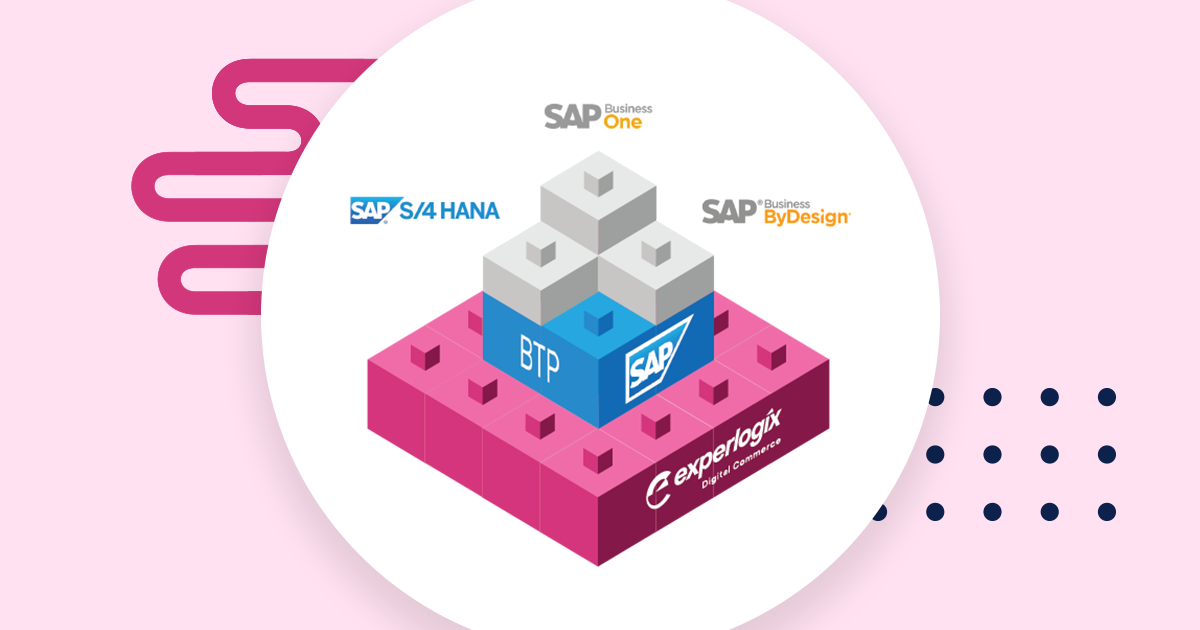
Choosing the right Wholesale eCommerce Software isn’t just a tech decision—it’s an operational one. The wrong platform doesn’t just underdeliver on features; it derails adoption, frustrates your buyers, and quietly kills ROI.
If you’re in wholesale, there’s a good chance you’ve been burned before.
You’ve sat through the demos, listened to the sales pitches, and seen the mockups with clean UI and bold promises. But then comes the reality: six months in, adoption’s flatlined, reps are still taking orders manually, and your customers are back on the phone (or worse, not ordering at all).
It’s not because you chose the “wrong” platform in a traditional sense. It’s because most wholesale ecommerce software was never built for your world. It was built for retail logic, not for the realities of punchouts, custom pricing, stock across branches, and operational complexity that doesn’t fit in a B2C box.
The result is sites that look good at launch but quietly collapse under the weight of everyday wholesale needs.
So, if you’ve tried ecommerce and seen adoption tank, it’s not you, it’s the software. And if your digital channel is still ruled by spreadsheets, fallback phone calls, and systems duct-taped together by IT, you’re not alone.
We’ll walk through what’s actually going wrong after launch, what operations teams truly need to make B2B ecommerce work, and what the leading distributors are doing differently to finally get adoption and ROI.
Let’s get into it.
The Real Cost of the Wrong Software
When wholesale ecommerce software goes wrong, it’s rarely because of the UI. Or the price tag. Or even the timeline.
It’s what happens after launch that stings most, when everything looks polished on the surface, but operations teams quietly go back to spreadsheets, phones, and manual workarounds. Adoption tanks, customers get frustrated, and the revenue you expect to see online just never shows up.
We’ve seen it time and time again: a shiny new B2B site gets the green light from marketing. Sales give it a nod too, but ops brought in too late or not at all. That’s how you end up with disconnected systems, inaccurate pricing and stock, and a customer experience that feels… off.
And your customers will notice. Wholesale buyers are smart. If the price they see online doesn’t match what they get from a rep (or if stock levels aren’t accurate), they’ll lose trust fast and they’ll ultimately stop using the site.
Worse still? You might not even realize it’s happening.
Plenty of teams have launched ecommerce sites only to find that most orders are still coming in over the phone.
Why? Because it’s easier.
Because customers don’t trust the platform. Because it’s missing the basics they actually need, like accurate pricing, stock by branch, click-and-collect logic, or the ability to reorder complex parts without starting from scratch.
So the fallback becomes spreadsheets. Again.
That’s the real cost of the wrong software. It’s not just dev time, it’s eroded trust, lost adoption, and revenue left sitting on the table.
Why Most “Wholesale eCommerce Software” Fails Post-Launch
Most wholesale ecommerce platforms fail post-launch because they weren’t designed for how B2B customers actually buy. They were designed for aesthetics, or more appropriately, for “going digital.” Basically, they were designed to tick a box.
The reality is, these platforms often come from the retail world. Great for browsing t-shirts, but not so great when you’re trying to manage punchouts, volume pricing, or branch-level stock checks.
So, what gets missed?
- Integration is an afterthought. Teams focus on front-end design but don’t tightly integrate with the ERP. That means customers get inaccurate stock levels, outdated pricing, or different info depending on whether they’re online or on the phone with a rep.
- Ops gets left out. IT teams are often looped in after the decision is made. By then, it’s usually too late to build a system that actually supports operational workflows.
- There’s no adoption plan. Even a perfectly built platform will flop without internal buy-in. If your sales and service teams aren’t pointing customers to the site, no one will use it.
- It’s missing key B2B functionality. Think customer-specific catalogs, personalized pricing, volume-based discounts, or deep search for replacement parts. If your customers can’t get what they need online, they’ll pick up the phone.
Wholesale buyers are savvy. They’ll spot inconsistencies and they will compare channels. If something feels off, they’ll go back to what they know: spreadsheets, emails, and reps who can “just sort it out.”
That’s why most ecommerce software doesn’t fail immediately. It fades quietly until someone looks at the data six months in and realizes barely anyone’s using the site.
Cleanline needed a system that could be configured quickly without going through six months of agency-led spec work. With a SmartPack designed for janitorial and safety supply workflows, they were able to:
- Go live in 60 days without a long, expensive dev cycle
- Use prebuilt features that align with their core workflows
- Sync ERP-driven pricing and availability from day one
What Operators Actually Need From Their eCommerce Software
Operators don’t need another shiny front-end that breaks the moment a customer asks for branch-specific stock. They need a platform that’s ERP-native from day one. Not “integrated later.” Not “API ready.” Native, tight, real-time.
Because if a customer sees one price online and gets quoted something else on the phone, the trust is already gone. And once that happens, they’re not coming back.
Beyond that, operators need tools that match how their customers actually buy. Think:
- Built-in quote workflows. B2B buyers rarely add to cart and check out in one go.
- Reorder logic that mirrors sales reps. Buyers want to reorder what they bought last quarter but with some tweaks.
- Customer-specific pricing, catalogs, and spend controls. So the experience feels tailored and not generic.
- Support for punchouts. Especially when serving big, process-heavy customers with their own internal procurement systems.
And here’s the kicker: they don’t want to spend 6+ months speccing this out with an agency. They want to get live quickly with all the heavy lifting already handled. They want it configured and delivering value in 60 days, not six months of back-and-forth wireframes and ticketed dev work.
That’s the bar now, especially for operators who’ve already been burned once by a build that looked good on paper but collapsed in real-world usage.
What Leading Teams Use Instead
Instead of forcing a retail platform to behave like wholesale, the teams doing it right pick digital commerce software that’s purpose-built for their vertical. At Exerplogix, we call these SmartPacks, which come with prebuilt industry logic baked in.
These are essentially out-of-the-box solutions designed specifically with unique industry needs and problems in mind. For example, the SmartPack for builders merchants can handle cut-to-length orders, multi-branch stock, and split carts, while the SmartPack for spare parts sellers includes deep search, compatibility checks, and superseded product support.
The idea is that you get a shorter time to value and a partner who already knows your sector inside out, both technically and commercially. They’ve done this before and can preempt what your customers are going to ask for.
RS Safety had a working site but it was clunky. Built on SAP B1, it struggled with performance, lacked key functionality, and couldn’t scale with its customers’ needs. Their buyers (large utilities) wanted punchout ordering, personalized catalogs, downloadable content, and spend controls for employees ordering boots, gloves, and PPE.
By switching to Experlogix SmartPacks, RS Safety was able to:
- Launch a fit-first ecommerce site tailored for safety and PPE
- Offer custom kits and role-based access for large customer orgs
- Support order punchouts and customer-specific product content
- Generate personalized, printable catalogs with real-time ERP data
This is what leading wholesale teams are doing now. They’re not out there hacking Shopify or hiring a dev agency to rebuild Magento. They’re actively rolling out platforms designed for their world with the features, logic, and support they actually need baked right in.
The New Standard: Software That Gets Used
Here’s the simplest way to tell if your wholesale ecommerce platform is working:
Are people actually using it?
If reps don’t touch it, if customers aren’t placing orders through it, and if ops still rely on spreadsheets, it’s not delivering ROI.
The best teams today don’t measure success by whether the site looks good or is launched on time. They measure it by adoption.
- Are more customers placing orders online each month?
- Is the percentage of total order volume shifting away from phones and emails?
- Is the average order value increasing because the platform makes it easier to buy more?
- Are internal teams able to repurpose manual roles into higher-value work?
You might get a strong adoption wave right after launch. But six months in, things can stall. Customers revert to old habits and reps go back to taking orders the way they always have. If no one’s actively promoting the platform, keeping it fresh, and using it in their day-to-day, usage quietly drops off.
That’s why the new standard goes beyond just having a live site. You need a platform that’s alive. That is, constantly updated, supported, and promoted across the business. It means having someone in the team owning the experience, personalizing content, optimizing search, tweaking catalogs, and listening to customer feedback.
Ecommerce is so much more than a side project these days. It’s a core channel. And if you’re serious about moving more orders online, the site can’t just be a digital brochure. It has to be a place your customers actually want to buy from and your team actually wants to use.
Ready to see what an ecommerce platform built for B2B wholesale really looks like? Book a demo and see it in action.



